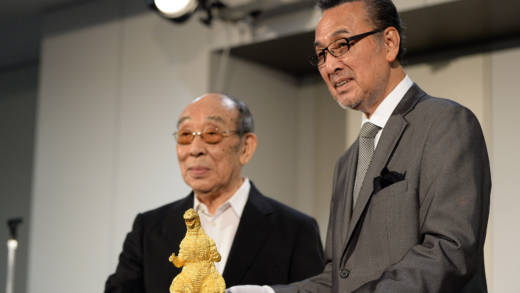Haruo Nakajima, the Japanese actor who was the first person to put on the Godzilla suit and bring the iconic monster to life, has died. He was 88.
Nakajima died Monday of pneumonia, his daughter and the Japanese movie studio Toho confirmed to multiple news outlets. Nakajima played Godzilla in the 1954 original and 11 subsequent films, donning the suit that he said weighed about 220 pounds and wreaking havoc on model cities and rival monsters.
But he began his career in samurai films, including a small role in Akira Kurosawa’s legendary 1954 film Seven Samurai. “I had the samurai top-knot hairstyle, holding a sword, and I often played the guy who gets killed,” Nakajima said in an interview earlier this year with the Great Big Story.
Nakajima recounted that he got the attention of Godzilla director Ishiro Honda on the set of a WWII film. “There was a scene where an airplane was on fire and an actor had to jump out of it. That was my role,” he said. “Mr. Honda saw this scene and thought, ‘This guy is full of energy.’ They came to see me as someone who had guts, and I think that’s why they wanted me for the role of Godzilla.”
In a 2004 interview with NPR, Nakajima described studying large animals at a zoo to help him prepare for the role of the lumbering reptile. “I watched the feet of an elephant and also a bear to see how a monster would move,” he said.

9(MDAxOTAwOTE4MDEyMTkxMDAzNjczZDljZA004))

